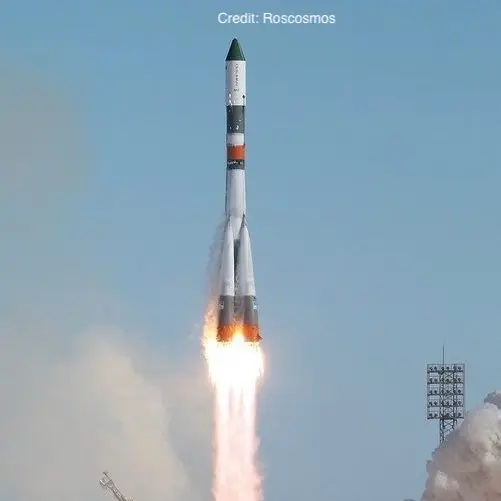Soyuz 22
Launch Success
Liftoff Time (GMT)
09:48:30
Wednesday September 15, 1976
Mission Details
Launch Notes
The cosmonauts named the spacecraft Ястреб ("Hawk").
Soyuz 22
Soyuz 22 was a 1976 Soviet crewed spaceflight. It was an Earth-sciences mission using a modified Soyuz spacecraft, and was also, some observers speculated, a mission to observe NATO exercises near Norway. The spacecraft was a refurbished Soyuz that had served as a backup for the Apollo-Soyuz Test Project (ASTP) mission the previous year. Cosmonauts Valery Bykovsky and Vladimir Aksyonov spent a week in orbit photographing the surface of the Earth with a specially-built camera. At the end of the mission, the crew took the film cassettes and other items they were returning to Earth and stowed them in the descent module. The retrofire, re-entry, and landing took place without incident on 23 September. The crew had photographed 30 geographic areas in 2,400 photographs. None of the cassettes were found to be faulty and all the images were of good quality. The results, it was said, would aid experts in the fields of agriculture, cartography, mineralogy, and hydrology. This is Soyuz's 37th flight, and 21th crewed flight. The Soyuz is a Soviet crewed spaceship, developed to made manned lunar missions. This version called 7K will fly 4 times on the giant launcher N1, and several tens of times on Proton to fly over the Moon, which will be successful during the mission Zond 4. Soyuz will become the first spacecraft to transport living beings to the Moon during the flight of Zond 5, with two turtles. Subsequently, it is adapted to low orbit and will fly on the Soyuz launcher to serve the Salyut and Mir stations and the ISS.
Low Earth Orbit
1 Payload
6,510 kilograms
Rocket


Manufacturer
RKK EnergiyaPrice
$20.00 million
Rocket
Height: 51.32m
Payload to Orbit
LEO: 6,860 kg
GTO: 0 kg
Liftoff Thrust
4,456 Kilonewtons
Fairing
Diameter: 3m
Height: 15.59m
Stages
3
Strap-ons
4
Launch Site
Stats
Soyuz U
35th
Mission
12th
Mission of 1976
RKK Energiya
1057th
Mission
68th
Mission of 1976
1976
94th
Orbital launch attempt